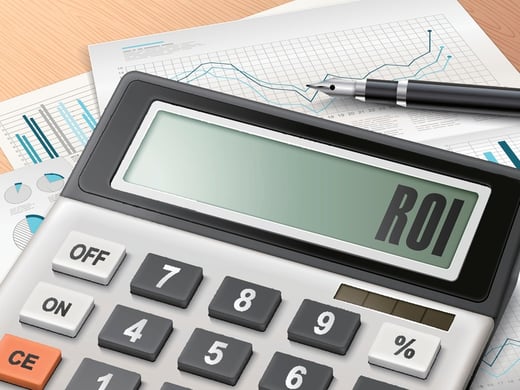 Marketers use a number of acronyms everyday, but KPI might be one of the most important, right behind ROI. A key performance indicator (KPI) is a metric - typically expressed as a numeric value - that indicates the growth, success, or failure of an advertising campaign or individual channel or component.
Marketers use a number of acronyms everyday, but KPI might be one of the most important, right behind ROI. A key performance indicator (KPI) is a metric - typically expressed as a numeric value - that indicates the growth, success, or failure of an advertising campaign or individual channel or component.
Essentially, it allows you to evaluate whether your marketing efforts are exceeding your expectations or needing improvement. You can measure and track KPIs in real time, which in turn allows you to adjust when necessary and optimize your returns. As we’ve discussed before, you should be showing ROI for your advertising methods. Otherwise, it’s a waste of time, resources, and money.
Fortunately, your digital advertising efforts can be measured by KPIs and used to track ROI. These include:
- SEO/SEM
- PPC
- Paid and organic social media
- Content marketing
- Response to offline campaign channels (e.g., radio)
We’ve put together four categories of important KPIs to track when considering your overall digital advertising ROI.
Website
Your website is the digital home for your brand and, in many ways, the face of your company. By tracking the following KPIs, you can determine how customers find your website, as well as how they engage with your website once there.
Bounce Rate/Time Spent on Page
When people land on a page of your website, do they leave or continue to browse other pages on your site? If they leave after visiting a single page, they’ve “bounced.” The lower it is, the better — a bounce rate higher than 70% should raise a red flag. A number of factors can lead to a high bounce rate - including irrelevant content, a poor user experience, or a confusing call-to-action - and it’s a good idea to evaluate these factors to keep people on your site longer.
Similarly, time spent on page is exactly what it sounds like. And a higher number means that people find your website relevant and valuable, and are more likely to follow your website conversion path.
Referral Source
Where was your site visitor before they landed on your site? This could be a particular social media channel, a search engine results page (i.e., organic search), a PPC ad (i.e., paid search, like Google Ads), or any other channel linking to your website. Understanding referral sources helps you determine where you should focus most of your digital advertising efforts.
Blog Traffic and Engagement
Which blog posts are receiving the most views and engagement? Are visitors commenting or sharing your posts? These metrics can help you identify topics that resonate with your audience, as well as guide your content strategy.
Landing Page Performance
What actions do people take on your campaign landing pages? How many people are following your CTA? This can indicate how compelling your copy and creative is on that page, as well as the relevancy of your offer.
Foot Traffic
The digital and physical space have become almost interchangeable on the path to purchase. Your digital ads can drive in-store action, so be sure to measure it.
Organic
How many people wander in naturally, perhaps out of sheer curiosity? This might separate them from your digital impact; however, remember that the path to purchase is fragmented. They could have seen a digital ad, then vaguely remembered they were interested in your store.
Word of Mouth
How many people visited your store based on a referral or recommendation? This is still among the most powerful drivers in business. However, word of mouth isn’t linear anymore either. Some may have been referred by someone in-person, while others may have learned about your brand after seeing a friend’s social media post. Find a way to determine where visitors first learned about your brand, and use that information to further focus your advertising efforts.
Campaign
How many people visit your store with a specific code from your digital campaign? Offer codes are especially good because they link directly back to a particular touchpoint within your campaign.
Paid and Organic Social Media
Social media can be used to achieve a number of digital advertising goals, including brand awareness, lead generation, and even sales. The KPIs below will help you identify the most effective social channels, the best performing content, and so on.
Engagement
How many people have liked, commented on, or shared your social media post or ad? These are the typical baselines for engagement, and they can be a quick way to gauge how well certain content is performing. However, remember that engagement alone isn’t enough to prove the success of a social media campaign.
Click-Through Rate (CTR)
How many people clicked your ad or a link within your social content? CTR reflects the ratio of people who clicked on a specific link to the total number of people who viewed your social media post. A high CTR implies a higher level of interest and curiosity, and can lead to key conversions, like completing a form or making a purchase.
Conversion Rate (CVR)
When evaluating your paid social ads, consider how many ad clicks actually resulted in a desired conversion or action. Although attribution isn’t always straightforward, tracking the CVR is a great way to measure ad performance in terms of sales.
PPC
Short for pay-per-click, this refers more to the method of ad delivery than a particular platform. Namely, you only pay for ads that are delivered to people who click on them, rather than everyone that simply sees the ad. This can encompass display ads on ad networks, banner ads on partner sites, and more. PPC is also used by some to refer to paid search.
Impressions
How many people have seen your ad? You may only be paying for the click, but this can indicate whether it’s reaching the right audience in the right way. If your ad has high impressions but low clicks, that may indicate your CTA or creative is weak. If you have low impressions and low clicks, that likely indicates an issue with targeting.
Click-Through Rate (CTR)
How many people clicked on your ad? While this directly impacts your spend on this particular type of advertising, it also helps determine targeting and message success. Ideally, your PPC campaign will have a dedicated landing page with a compelling CTA. If the bounce rate is equivocal to the number of people that clicked on your ad, that means there’s a problem with your targeting. If the time spent on page is longer, but there’s low conversion, your creative or CTA may be weak.
Conversion Rate (CVR)
How many people followed through on the CTA beyond the ad? This ultimately indicates that the ad reached a qualified lead and moved them further into the sales funnel.
When you need to assess the effectiveness and efficiency of your digital advertising — and help prove ROI in the process — KPIs are both invaluable and necessary. Ultimately, ROI comes down to driving sales and lifts in revenue, and KPIs illuminate the link between the advertising and the results. Be sure to thoroughly assess your digital advertising strategy using the KPIs above to ensure you’re getting the best bang for your buck.

